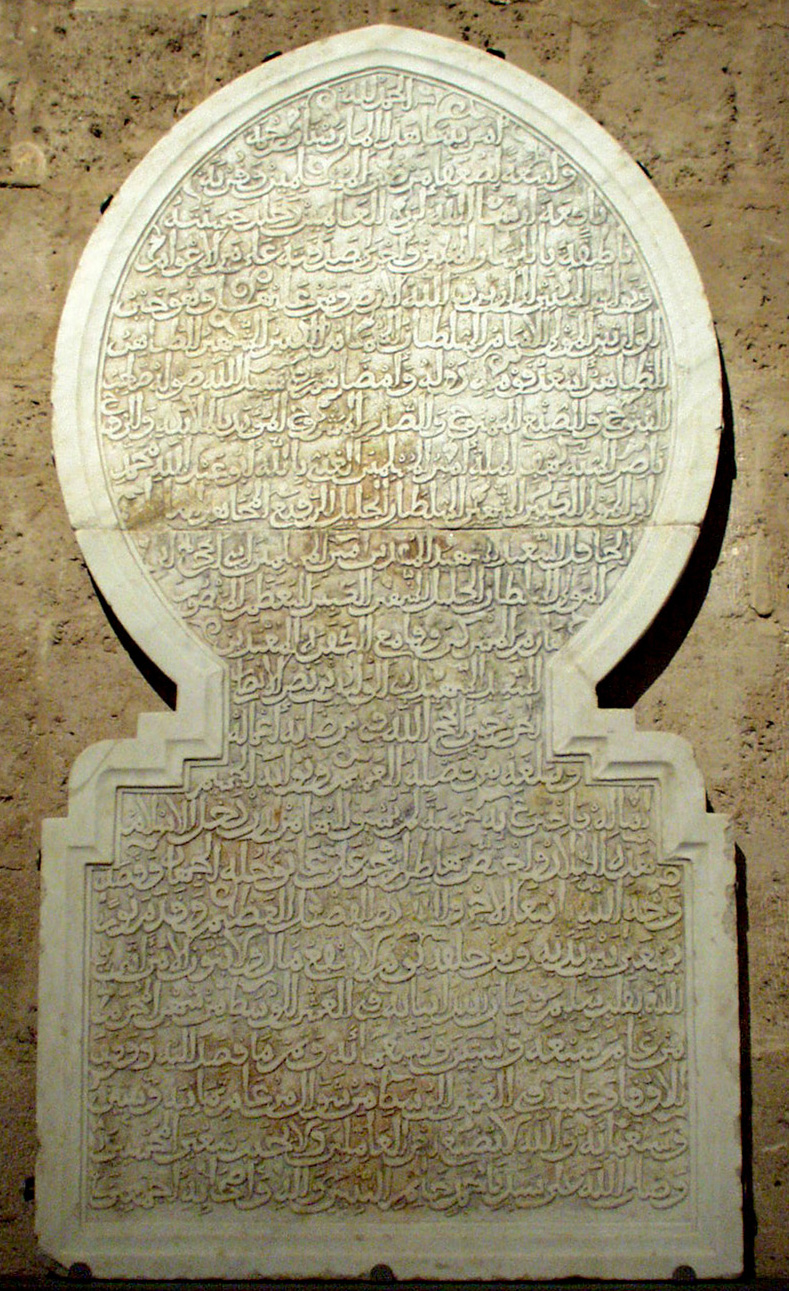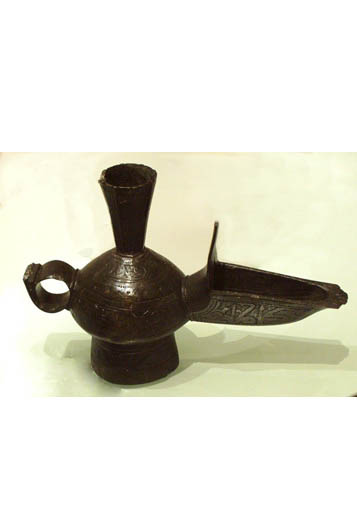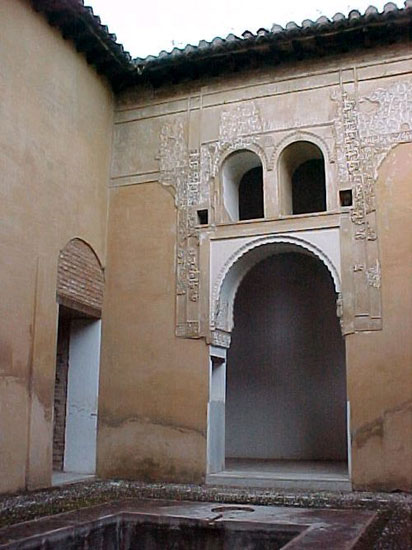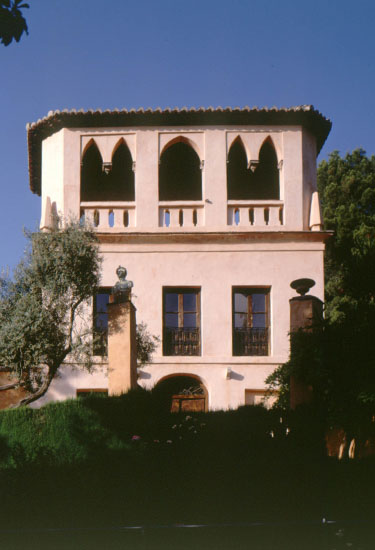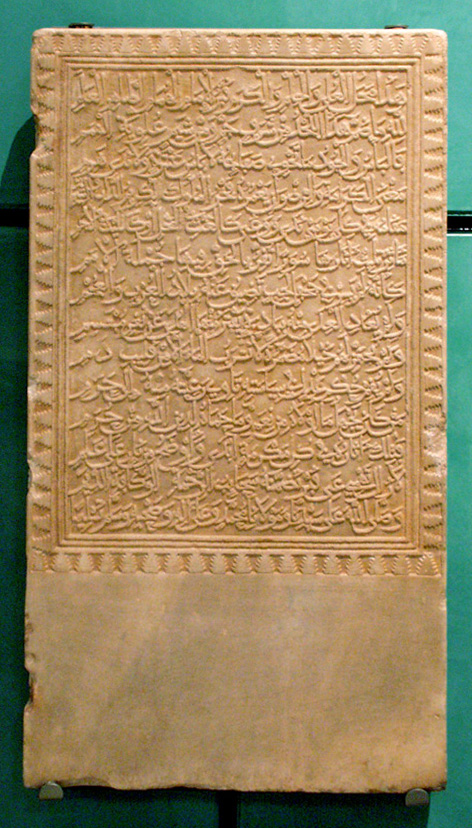Fabric with crowned lions
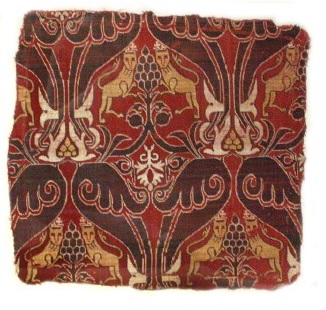
Dª Elena Gómez García
Fabric manufacture was of the most outstanding craft industries of the Hispano-Muslim period due to its high technical quality. This piece is characterized by its refined decoration showing two crowned lions flanking a pine cone symbolizing a tree of life. This rises up from a thin stem with pomegranates and continues upwards with spearheaded leaves that frame the two animal figures. A leaf of parsley appears at the base in the centre.
The decoration has many features typical of the classical period of animals, stems and leaves, but this later evolved towards gothic-inspired motifs thanks to the new tastes imposed by the Christians. This resulted in changes in the motifs, with for example the pine cone being replaced in the 16th Century by a fleuron and in the 17th Century by a vase of flowers.
This fabric was made using the lampas technique and shows a flower frequently used in the weaving workshops in the morisco period, which echoed developments in decorative motifs used in architecture. Thanks to the written sources and to both private and official collecting by institutions, we have been able to study similar examples such as the ones belonging to the Lázaro Galdiano Foundation and the Gómez Moreno Institute among other institutions.
Research into the fabrics produced by Nasrid weavers focuses on different aspects such as variations in the use of raw material, the choice of techniques, decorative elements, colours and uses.





 Contact
Contact






